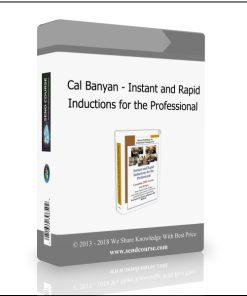Coursera – Tibetan Buddhist Meditation and the Modem World: Lesser Vehicle | Available Now !
$28.00
Coursera – Tibetan Buddhist Meditation and the Modem World: Lesser Vehicle | Instant Download !
PLEASE CHECK ALL CONTENTS HERE:
Coursera – Tibetan Buddhist Meditation and the Modem World: Lesser Vehicle
Everything Else
231 files,..
DVD
5.4 GB
Tibetan Buddhist Meditation and the Modern World explores the immense variety of meditation practices past and present. We present their histories, their philosophical underpinnings, their transformations in the modern global world, and we give you a chance to reflect upon meditation practices through secular contemplations designed just for this course.
We use a traditional, if overly simplistic, way of grouping Buddhist philosophical systems and ritual-contemplative practices into “three vehicles”, three programs of theory and practice supporting the personal journey from suffering to enlightenment. This scheme became normative in India and Tibet: (i) the Lesser Vehicle (Hīnayāna), (ii) the Great Vehicle (Mahāyāna), and (iii) the Adamantine Vehicle (Vajrayāna), also referred to as “esoteric Buddhism” or “Buddhist tantra”. To this, we will add a fourth Vehicle which is explicit in many Tibetan materials, though no standard term ever emerged that was accepted by all sectarian traditions – we will thus term it as the “Natural Vehicle” or “Post Tantra”. We follow an indigenous Tibetan tradition in terms of characterizing each with a specific orientational paradigm – repression, refinement, transformation, and natural freedom. These twelve meditative traditions constitute the framework for the course’s discussion of the main streams of Tibetan Buddhist meditation.
The five modules of the present course, dedicated to “Lesser Vehicle” practices and perspectives, treat the first five of these twelve types. Each module in turn has four components: (i) the specific Buddhist meditation in its traditional presentation and practice; (ii) modern scientific research into its efficacy and dynamics, or on practices, principles, and processes related to this type of meditation in our analysis; (iii) the fact, problems, and opportunities of modern secular adaptations in a variety of educational, professional, and personal settings; and (iv) secular practices for experimentation, which are either direct adaptations or new practices designed to give an experiential sense of some of the principles underlying the Buddhist meditative practice.
1 review for Coursera – Tibetan Buddhist Meditation and the Modem World: Lesser Vehicle | Available Now !
| 5 star | 100 | 100% |
| 4 star | 0% | |
| 3 star | 0% | |
| 2 star | 0% | |
| 1 star | 0% |
Sorry, no reviews match your current selections
Q & A
Ask a question
Your question will be answered by a store representative or other customers.
Thank you for the question!
Your question has been received and will be answered soon. Please do not submit the same question again.
Error
An error occurred when saving your question. Please report it to the website administrator. Additional information:
Add an answer
Thank you for the answer!
Your answer has been received and will be published soon. Please do not submit the same answer again.
Error
An error occurred when saving your answer. Please report it to the website administrator. Additional information:
Related products
NLP & Hypnosis
Ecommerce
Ecommerce
NLP & Hypnosis
Ecommerce













excellent as described, fast delivery A++++ | Coursera – Tibetan Buddhist Meditation and the Modem World: Lesser Vehicle